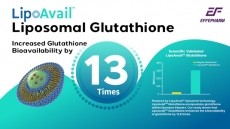Celery flavonoid may cut ovarian cancer risk
Other common dietary flavonoids, like myricetin, kaempferol, quercetin, and luteolin, had no effects on the risk of ovarian cancer, according to findings published in the International Journal of Cancer.
“Although none of the individual foods contributing to apigenin intake in this study population were significantly associated with ovarian cancer risk, there was a suggestion of an inverse association with increasing consumption of cauliflower, raisins, tomato sauce, and several other flavonoid-rich foods,” wrote lead author Margaret Gates.
Of all the cancers of the female reproductive system, ovarian cancer has the highest mortality.
In the UK, ovarian cancer causes more than 4,000 deaths per year, according to Cancer Research UK. While in 2003 in the US, a total of 14,657 women died from ovarian cancer, said the Ovarian Cancer National Alliance (OCNA).
According to OCNA figures, one in 69 women will develop ovarian cancer in their lifetime and another one in 95 women will die from the disease.
Study data
Researchers from Brigham and Women's Hospital, Harvard Medical School, and Harvard School of Public Health examined if flavonoids offered a protective effect against ovarian cancer in a large, population-based study involving 1,141 cases and 1,183 matched controls. The average age of all the participants was 51.
Intakes of myricetin, kaempferol, quercetin, luteolin, and apigenin were calculated using a 126-item semi-quantitative food frequency questionnaire (FFQ), and from data from the USDA Database for the Flavonoid Content of Selected Foods.
Although no statistically significant differences were observed between the highest and lowest average intakes of all flavonoids, analyses of each individual flavonoid, showed that apigenin was associated with a significant 28 per cent decrease in risk, after adjusting for the other 4 individual flavonoids.
Mechanism?
Several mechanisms have been proposed by which apigenin and other flavonoids may reduce the risk of ovarian cancer, said the researchers. These include an inhibitory effect on endogenous oestrogen activity or a reduction on circulating oestrogen levels via competition for oestrogen receptors or suppression of oestrogen biosynthesis.
“These mechanisms could be important in inhibiting ovarian carcinogenesis, due to the oestrogen-rich environment within the ovaries and the proliferative effect of oestrogen on ovarian epithelial cells,” wrote the researchers in the journal.
The antioxidant activity of the flavonoids may also be behind the potential benefits, said Gates and her co-workers, since DNA damage would be reduced via the scavenging of free radicals or upregulating of antioxidant enzymes, such as superoxide dismutase (SOD) and glutathione reductase
The need for confirmations
“Overall, the results of this large case-control study provide limited support for an association between flavonoid intake and risk of ovarian cancer,” said the researchers. “However, given the promising findings from other studies, as well as the evidence of an inverse association with apigenin intake in this analysis, additional studies of flavonoid intake and ovarian cancer risk are warranted.
“Prospective studies that are able to examine flavonoid intake over time and different latency periods between exposure and diagnosis would be particularly informative, as would studies of potential mechanisms of action.
“If confirmed, an inverse association with intake of apigenin or other flavonoids would provide an important and modifiable means of ovarian cancer prevention,” they concluded.
The study was funded by the National Cancer Institute at the National Institutes of Health.
Source: International Journal of CancerVolume 124, Issue 8, Pages 1918-1925"Flavonoid intake and ovarian cancer risk in a population-based case-control study" Authors: M.A. Gates, A.F. Vitonis, S.S. Tworoger, B. Rosner, L. Titus-Ernstoff, S.E. Hankinson, D.W. Cramer












